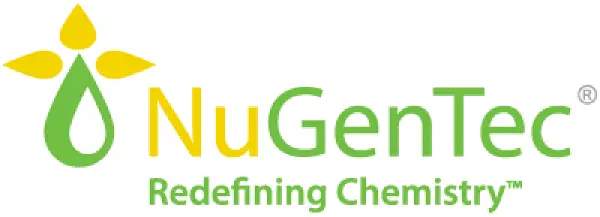November 22, 2018 Why Boeing Approved FluoSolv® AP as a Vapor Degreaser
FluoSolv® AP has been approved for Boeing’s specification as a BAC 5408 Vapor Degreasing Solvent. To understand what led Boeing to approve FluoSolv® AP, it’s good to know the whole picture. In case you’re not familiar, we’ll start with the obvious question:
What is Vapor Degreasing?
Vapor degreasing is a cleaning method that involves heating a solvent until it boils and allowing the vapor to condense onto the metal that is being cleaned. When the solvent condenses on the metal, an ideal solvent will solvate every molecule of soil from the surface, leaving a metal that is perfectly clean - this is a form of precision cleaning. There are many options for vapor-degreasing solvents but, unfortunately, many of them have drawbacks such as toxicity, ozone-depletion potential, carcinogenicity, and reactivity. In order to understand where the vapor degreasing world is, now, it’s worth looking back through a history that begins in the unexpected realm of refrigerants.
When I Was Your Age, We Kept the Toxins in the Refrigerator
Before the 1920’s, if your refrigerant starting leaking, your house became a hazard-site filled with toxic ammonia, sulfur dioxide or chloromethane. Chlorofluorocarbons, on the other hand, were found to be non-toxic, non-flammable, and had low-boiling points. When Thomas Midgely, Jr. improved the method of synthesis of CFC’s in the 1920’s, he popularized their use as a refrigerant with the brand name Freon; even going so far as to demonstrate its safety to the American Chemical Society by inhaling the gas and using it to blow out a candle. CFC-use became widespread and the direct effects of refrigerants on human health were seemingly mitigated. Unfortunately, CFC’s weren’t as perfect as they seemed - in the 1970’s, evidence of CFC’s effects on the stratospheric ozone became realized and made its way into scientific publications that led to an eventual ban on CFC production.
When the vapor of CFC’s or HCFC’s (hydrochlorofluorocarbon) reaches the stratosphere, the molecules undergo a reaction stimulated by sunlight. This causes halogen ions to break away from the molecule and disperse. When these halogens interact with ozone (O3), which acts as a shield from the harmful ultraviolet rays of the sun, ozone is broken down into oxygen (O2). The thinning of the stratospheric ozone layer contributes to the rising temperatures and melting of polar icecaps while creating a positive feedback loop for the degradation of CFC’s and HCFC’s and ozone depletion.
It would seem that human chemical processes tend to interact with ozone in ways that are detrimental to human health. While CFC’s and HCFC’s deplete ozone in the stratosphere, where ozone is beneficial, VOC’s (volatile organic chemicals) add ozone to the troposphere, or the ground level, where it is harmful. Read more about VOC's and their effects on human health here, on our post about the VOC-Free NuStrip RH.
HCFC’s such as Asahi AK-225 (a blend of HCFC-225 ca/cb) & HCFC-141b were popular vapor degreasers, but, as they are ozone-depleting substances, they have been banned from production
Unlike Your Grandpa’s Vapor Degreaser, FluoSolv® AP is Not an Ozone Depleting Chemical
One reason FluoSolv® AP is becoming popular with companies like Boeing: unlike HCFC’s like Asahi AK-225 and HCFC-141b, FluoSolv® AP will not contribute to ozone depletion. FluoSolv® AP is perfectly suited as a drop-in replacement for these ozone-depleting vapor degreasers, without the long-lasting effects on our stratosphere. Another concern with vapor degreasers is toxicity and acute risks to worker and community safety. This is the topic we’ll explore next.
Is My Vapor Degreaser Going to Give Me Cancer?
If you’re using nPB, the answer is: maybe. nPB, also known as 1-bromopropane or n-propyl bromide, became a popular vapor degreaser when TCE, TCA, and perchloroethylene became heavily regulated (read more about the hazards of these three chlorinated solvents in our post about pick the best parts washer). Since then, the National Toxicity Program has deemed nPB “reasonably anticipated to be a human carcinogen.” With a statement like this from the widely-respected National Toxicity Program, companies like Boeing have anticipated an increase in regulation for nPB and have sought safer alternatives.
So, Why Did Boeing Approve FluoSolv® AP?
The vapor degreasers of the past have been shown to either deplete the ozone layer or pose serious threats to human health. While FluoSolv® AP is non-hazardous, non-flammable, and non ozone depleting, it also outperforms competing vapor degreasers and can be used as a drop-in replacement with no modifications to cleaning procedures.
FluoSolv® AP utilizes solvent blending technology that leverages the chemical solvency of the fluid as well as its physical properties such as high density, low surface tension and low viscosity for optimal performance. Our research has shown that to clean metal surfaces in the shortest amount of time the solvent must flow extremely close to the surface to “catch & release” contaminants.
NuGenTec: Redefining Chemistry
If you are seeking healthier, more environmentally responsible, and less costly alternatives for your industrial processes, contact NuGenTec today. Click here to read about the technical details on FluoSolv AP.
|



